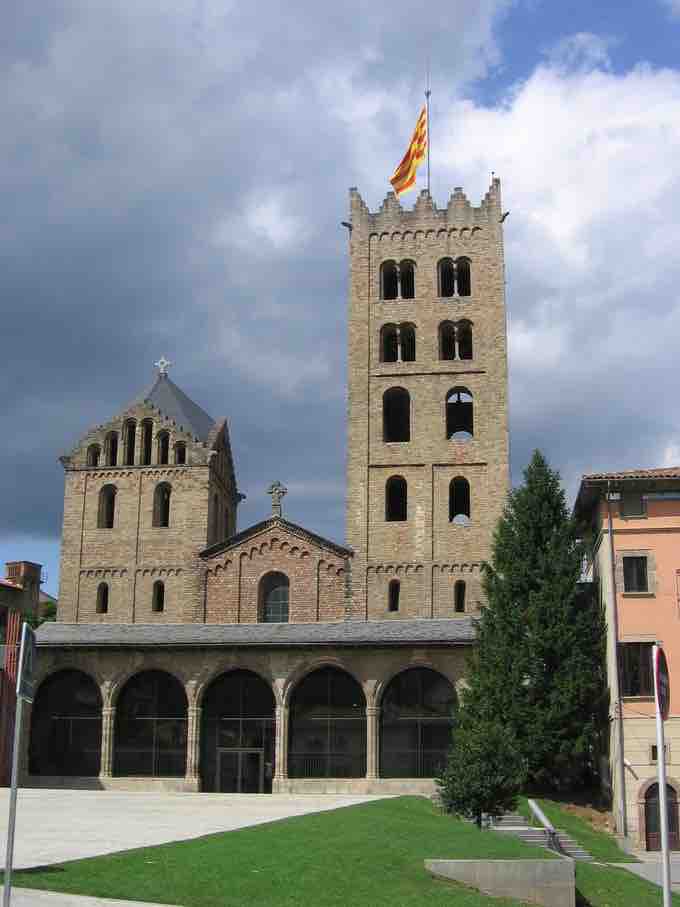Development of First Romanesque Architecture
Romanesque architecture is often divided into two periods: the "First Romanesque" style and the "Romanesque" style. The First Romanesque style developed in the north of Italy, parts of France, and the Iberian Peninsula in the 10th century prior to the later influence of the Abbey of Cluny. The style can be attributed to great architectural activity by groups of Lombard teachers and stonemasons working in the Catalan territory during the first quarter of the 11th century. Abott Oliba of the Monastery of Santa Maria de Ripoll served as a particularly influential impeller, diffuser, and sponsor of the First Romanesque style.
To avoid the term Pre-Romanesque, which is often used with a much broader meaning to refer to early Medieval and early Christian art (and in Spain may also refer to the Visigothic, Asturias, Mozarabic, and Repoblación art forms) Puig i Cadafalch preferred to use the term "First Romanesque" or "first Romanesque art" to designate those Catalan anticipations of the Romanesque itself.
Characteristics
The First Romanesque style, also known as Lombard Romanesque style, is characterized by thick walls, lack of sculpture, and the presence of rhythmic ornamental arches known as a Lombard band. The difference between the First Romanesque and later Romanesque styles is chiefly a matter of the expertise with which the buildings were constructed. The First Romanesque employed rubble walls, smaller windows, and unvaulted roofs; a greater refinement marks the following Romanesque style, along with increased use of the vault and dressed stone. For example, Abott Oliba ordered an extension to the Monastery of Santa Maria de Ripoll in 1032 mirroring the First Romanesque characteristics of two frontal towers, a cruise with seven apses, and Lombard ornamentation of blind arches and vertical strips.

Ripoll Monastery
The Monastery of Santa Maria de Ripoll is a Benedictine monastery, built in the First Romanesque style, located in the town of Ripoll in Catalonia, Spain. Although much of the present church includes 19th century rebuilding, the sculptured portico is a renowned work of Romanesque art.